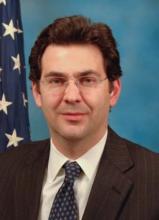Payments for outpatient services and those provided at ambulatory surgical centers will be bundled in the same way as inpatient procedures, with exceptions for some cardiology-related services, under the final rule for Medicare’s 2014 Hospital Outpatient Prospective Payment System.
Further, five levels of outpatient codes for both new and established patients will be replaced with a single code for all visits, according to the final rule.
Having a single code and a single payment "is more administratively simple for hospitals and better reflects hospital resources involved in supporting an outpatient visit," according to a statement from the Centers for Medicare and Medicaid Services.
Under the final rule, supporting items and services associated with a procedure are bundled into a single payment, including drugs, biologicals, and radiopharmaceuticals that function as supplies when used in a diagnostic test or procedure; drugs and biologicals that function as supplies when used in a surgical procedure, including skin substitutes; certain clinical diagnostic laboratory services; certain procedures that are never done without a primary procedure, and device removal procedures.
The bundling of these services and supplies will create efficiencies and lower costs, CMS Principal Deputy Administrator Jon Blum, said in a statement. The final rule "gives hospitals a stake in managing their resources to generate better coordinated and, ultimately, more affordable outpatient care," he added.
Officials at the American College of Cardiology said they were pleased to see that the CMS did not bundle imaging services such as echocardiography, as had been initially proposed. The organization says this is because of "significant lobbying work" by the ACC and the American Society of Echocardiography.
Cardiologists also got a reprieve when the agency delayed until 2015 bundled payment for percutaneous coronary interventions and placement of implantable cardioverter defibrillators.
The final rule was not so favorable for oncologists. The rule continues the practice of paying average sales price plus 6% for drugs and biologics that are administered on an outpatient basis. When the effects of federal budget sequestration are factored in, that pay rate drops by 2%, which means that oncologists are often barely able to cover the cost of a drug, according to an American Society of Clinical Oncology policy expert who spoke on background.
The final rule also requires outpatient departments to collect data on several new performance measures, including influenza vaccination among health care personnel, appropriate follow-up intervals for normal colonoscopy in average-risk patients, avoidance of inappropriate use of colonoscopy follow-up in patients with a history of polyps, and improvement in visual function within 90 days of cataract surgery.
Ambulatory surgical centers (ASCs)will have to collect data on the two colonoscopy measures and the cataract measure. The data will be used to set payments in 2016.
The CMS removed the requirement that hospitals document referrals from the outpatient setting to cardiac rehabilitation, saying that it was too burdensome.
The final rule also established the performance period (all of 2014) and baseline period (all of 2012) for measuring catheter-associated urinary tract infection, central line-associated bloodstream infection, and surgical site infection measures for the Hospital Value-Based Purchasing Program in 2016.
The final Hospital Outpatient Prospective Payment System (OPPS) rule applies to more than 4,000 hospitals, including general acute care hospitals, inpatient rehabilitation facilities, inpatient psychiatric facilities, long-term acute care hospitals, children’s hospitals, and cancer hospitals, and also 5,000 Medicare-participating ASCs. The OPPS covers most outpatient services, and partial hospitalization at outpatient departments and community mental health centers. The CMS estimates that in 2014, the agency will pay $50 billion for outpatient procedures and about $4 billion for ASC procedures.
The rule is open for comment at www.regulations.gov until Jan. 27, 2014.
On Twitter @aliciaault


